
In Futures Past: On the Semantics of Historical Time, historian Reinhart Koselleck wrote about the impact of modernity on the experience of time. Among other things, he postulated that since the end of the eighteenth century, there has been a growing asymmetry in historical time between the field of experience (“present past, whose events have been and can be remembered”) and the horizon of expectations (the future made present, which “directs itself to the not-yet”)1 1 - Reinhart Koselleck, Futures Past: On the Semantics of Historical Time, trans. Keith Tribe (New York: Columbia University Press, 2004 [1979]), 259.. In Koselleck’s view, this expanding gap is inseparable from the acceleration of life resulting from technological advances and increases in productivity — an acceleration that leaves less and less time for the experience of the present, and this experience becomes so brief that temporality flees toward the future. As rhetoric, condition, and historical period, modernity offers a promise of progress (of novelty, perfectibility, and opportunity) achievable in a future that is composed of a devaluation of the past and an erasure of the present. Although modernity still holds sway, historian François Hartog maintains that the futurism of the modern regime of historicity is in the process of being replaced by a temporality that he describes as presentist.2 2 - François Hartog, Régimes d’historicité. Présentisme et expériences du temps (Paris: Éditions du Seuil, 2003), 27. Exploring the notion of the “regime of historicity,” Hartog endeavours to define how civilizations articulate the relationship among past, present, and future. In his view, the futurism of modernity has been transformed into a presentism that has abolished the prerogative of the future by affirming that of the present. In this new regime — whose traces have been manifest since the fall of the Berlin Wall in 1989, an event that exemplified the collapse of communism as the last great “emancipation” story of the twentieth century — the temporal categories of past and future are absorbed by the present. The catastrophes of the twentieth century (wars, genocides, ideological shifts) are perceived as unresolved traumas of imagined futures of which we can barely reimagine the emancipatory potential. The past and the future exist only through the prism of the present, as a quest for memory and apprehension. Hartog’s hypothesis has much merit, but it does not take into account the pluralism of our contemporaneous worlds. Privileging the present — and this is where one of the most innovative aspects of contemporary art of the last twenty years comes into play — does not necessarily mean the absorption of the past and future by the present. It may also take the form of a critical necessity: that of imagining a future that stops devouring the present — as it did under the modern regime of historicity — so that it is instituted from within the present as well as through some retention of the past, by reducing the gap between the field of experience and the horizon of expectation. What modernity devalues (the present, the past) becomes that which may productively determine the future.
Since the 1990s, contemporary art has developed an aesthetic of temporalization of history that presentifies the futurism of the modern regime of historicity and makes room for what the historian Michel de Certeau called “the unthought” in the discipline of history: its temporal dimension.3 3 - Michel de Certeau, Histoire et psychanalyse entre science et fiction (Paris: Gallimard, 1987), 76. As it engages in this historical process, contemporary art reorganizes the modern relationship with past, present, and future by emptying the modern concept of progress of its ideality. Contemporary art does not try to fill the future with new content, as it does not recognize the modern utopian impulse. The temporal turning point that it embodies is situated not in the action of progress, but in the reconsideration of the idea of progress. It stirs up the vicissitudes and inconsistencies of the passage of time — what philosopher Yuval Dolev defines as “the becoming present of future events and then their becoming past” — to remove from the future its modern role of initiating change and integrating the human being with history. In art, the trajectories that mobilize this aesthetic are diverse and numerous: the development of a future archaeology, the emphasis of lost time, diversion of measured time, melancholization of obsolescence, advocacy of simultaneity and the interminable, for example. Here are four explorations of historical time, associated with the work of four artists. I chose them for their ecological orientation — simply because one of the most devastating impacts of the modern regime of historicity is the global deterioration that it imposes on the environment. What these practices have in common is that they implement an action (valorization of the present) in continuity with the past, with the goal of realizing the possibility of a future, thus revealing a connection to and intimacy with the environment.


La Fila, La Vega barrio, Caracas, 2003.
Photos : Andre Cypriano
permission de | courtesy of Liyat Esakov & Marjetica Potrč
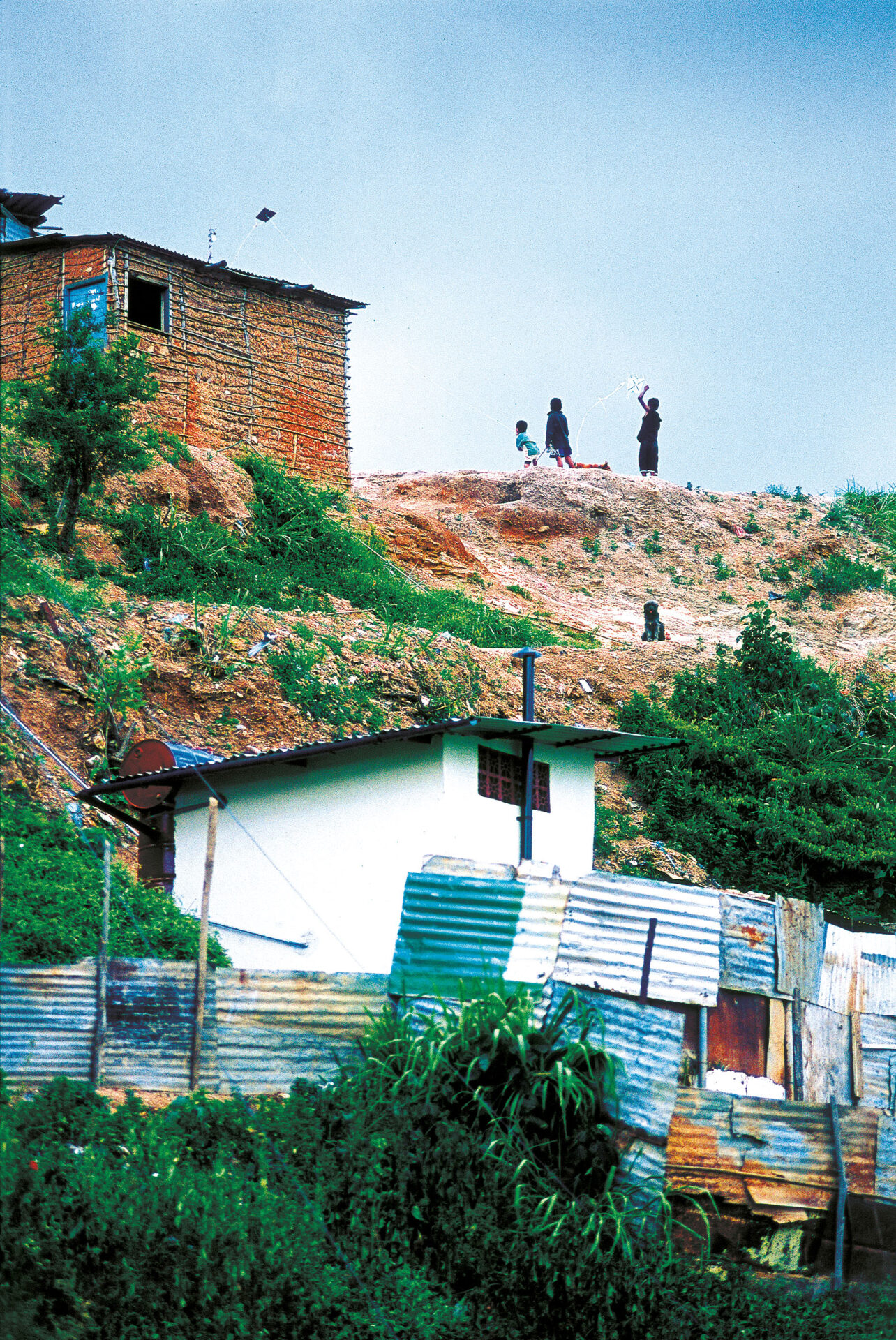

Photos : Daenam Kim
permission de | courtesy of the artist
Durability
Marjetica Potrč, Slovenian architect and artist, living in Ljubljana and Berlin. Her in situ projects are created in urban environments in collaboration with other architects and in dialogue with the residents of neighbourhoods in crisis. The projects are intended to solve urgent infrastructure problems related to sanitary facilities, water distribution, and energy sources. They also take the form of community gardens and discussion forums. Among the many projects that she has worked on over the past fifteen years are the construction of a dry toilet in the La Vega barrio, an informal city within the modernist city of Caracas (Dry Toilet, 2003), to solve a water-supply problem; the construction of a community garden in the Nieuw Westneighbourhood of Amsterdam (The Cook, the Farmer, His Wife and Their Neighbour, 2009), which was brought about by opening a fenced garden, to which public entry had been forbidden; and the construction of a tin roof to gather rainwater and funnel it into a vat to provide irrigation for a rice paddy growing on the roof of a school (A Rooftop Rice Field at Byuri School, South Korea, 2010). Many of the projects are accompanied by “case studies,” which are exhibited in museums or galleries. Dry Toilet, for example, was presented in various museums between 2004 and 2009 in the form of preparatory drawings and various prototypes: brightly coloured outhouses built from accessible, affordable, recycled, and easily assembled materials. Two questions underlie all of Potrč’s projects: “What kind of agora — what kind of shared gathering space — do we want for today[?]” and “What kind of space do we want to leave behind for the coming generations?”4 4 - www.afterall.org/online/spaces-for-a-new-culture-of-a-living/#.UvAJ16l5mQs. Her practice proposes durability as a temporality key to the renewal of declining urban areas, a durability established by updating (and not abolishing) the modernist architectural heritage and by residents sharing their knowledge with each other. It corresponds to a redefinition of the commons (as discussed in The Commons Project, a five-month series of workshops held in 2013 in two unused sites near the Gemeentemuseum, in The Hague). There is no guarantee that the solutions will endure, but they were inspired by durability — a temporality diametrically opposed to the modern regime of historicity in its perpetual quest for novelty.

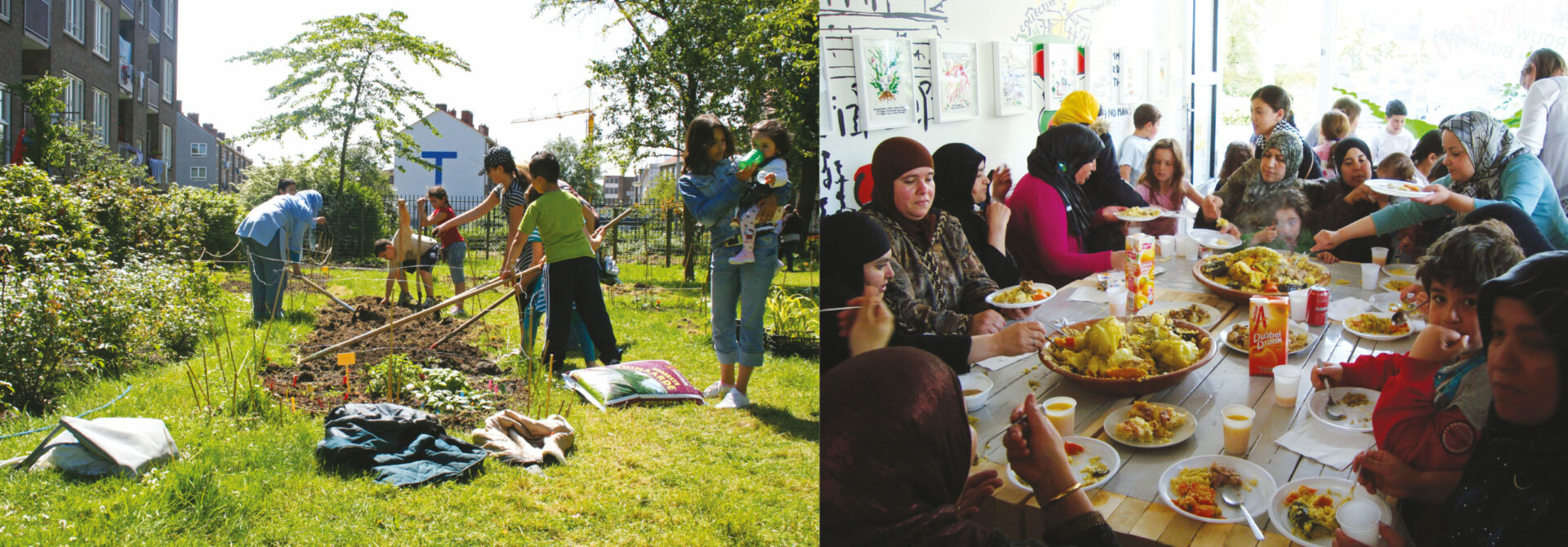
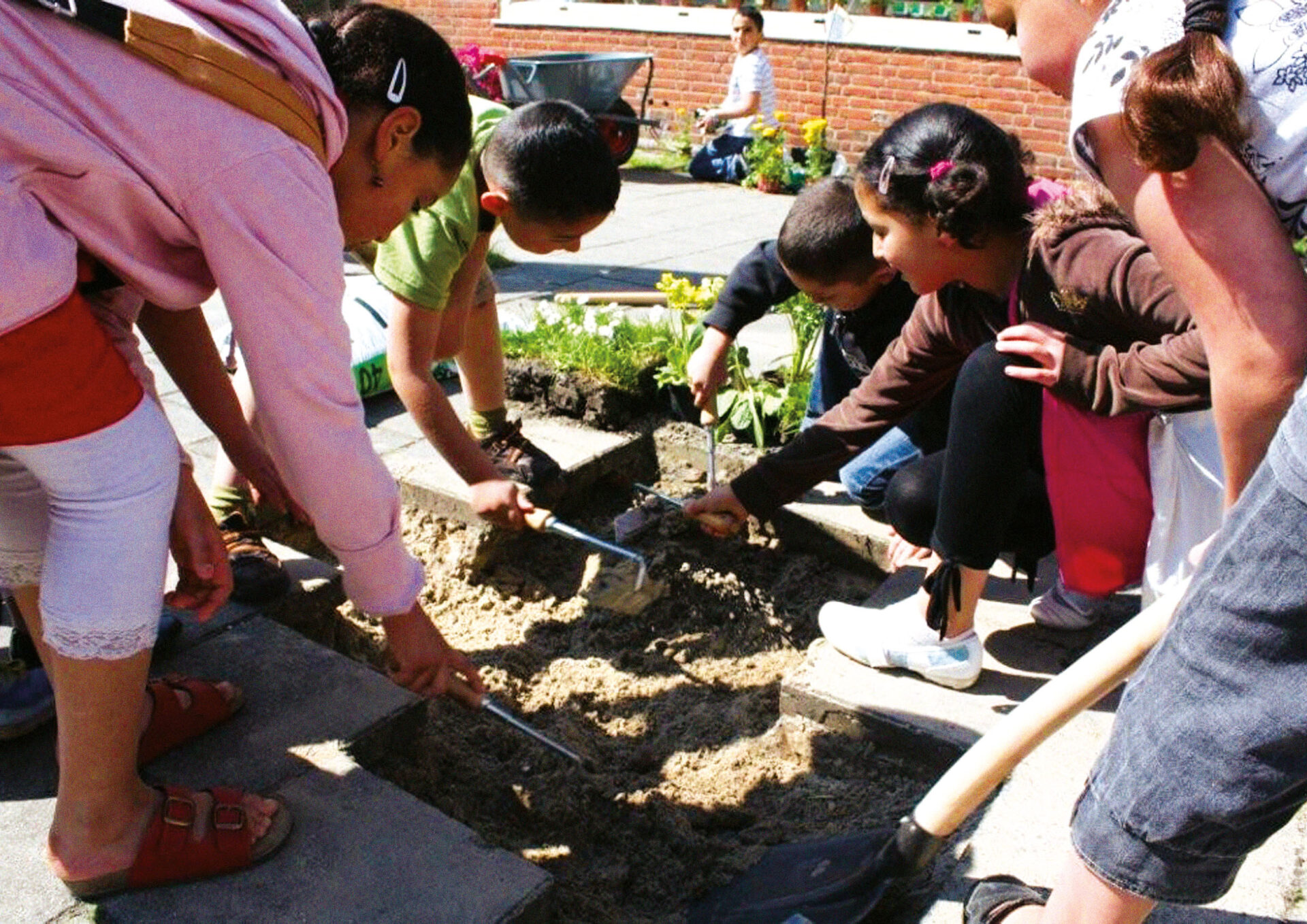
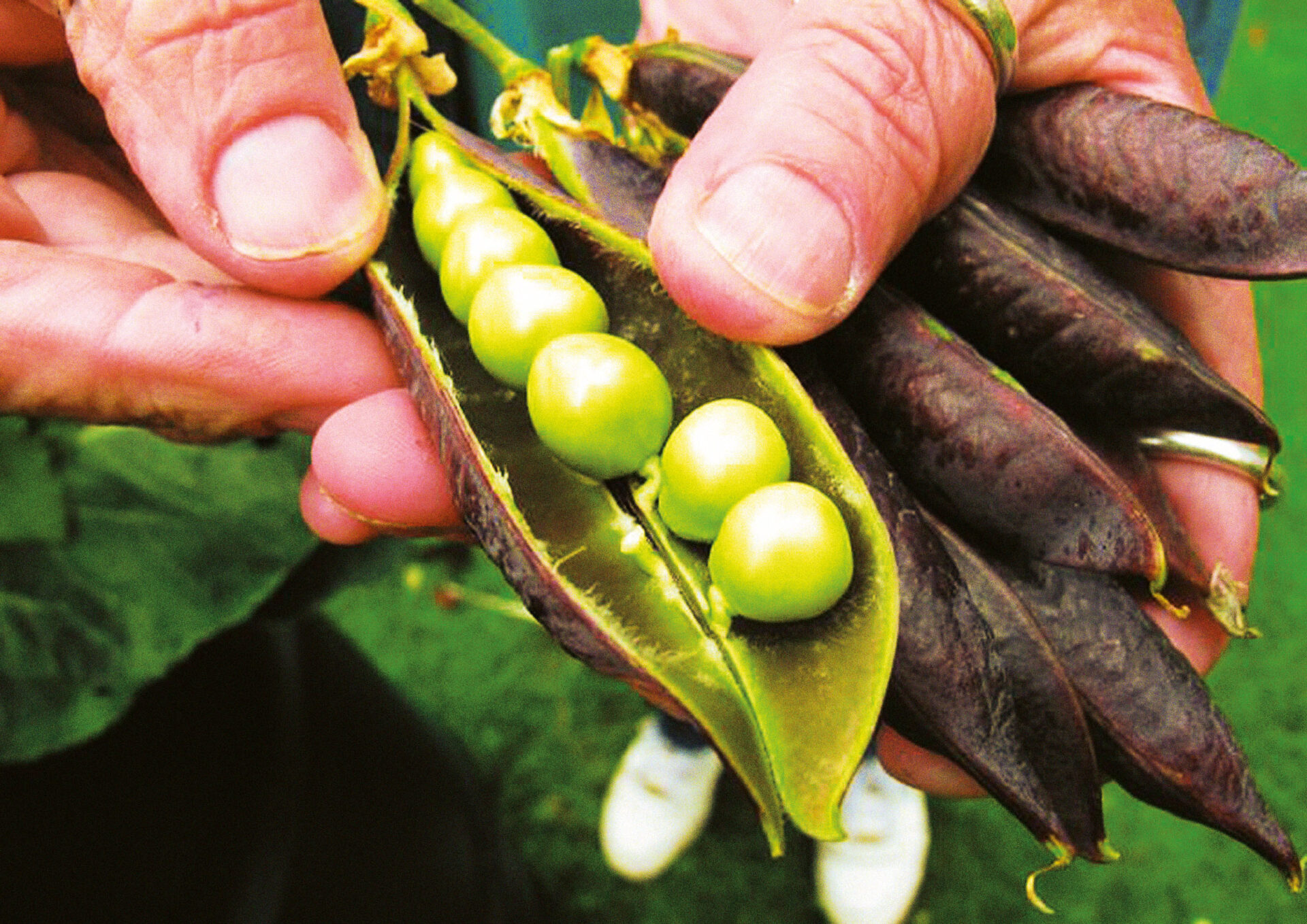
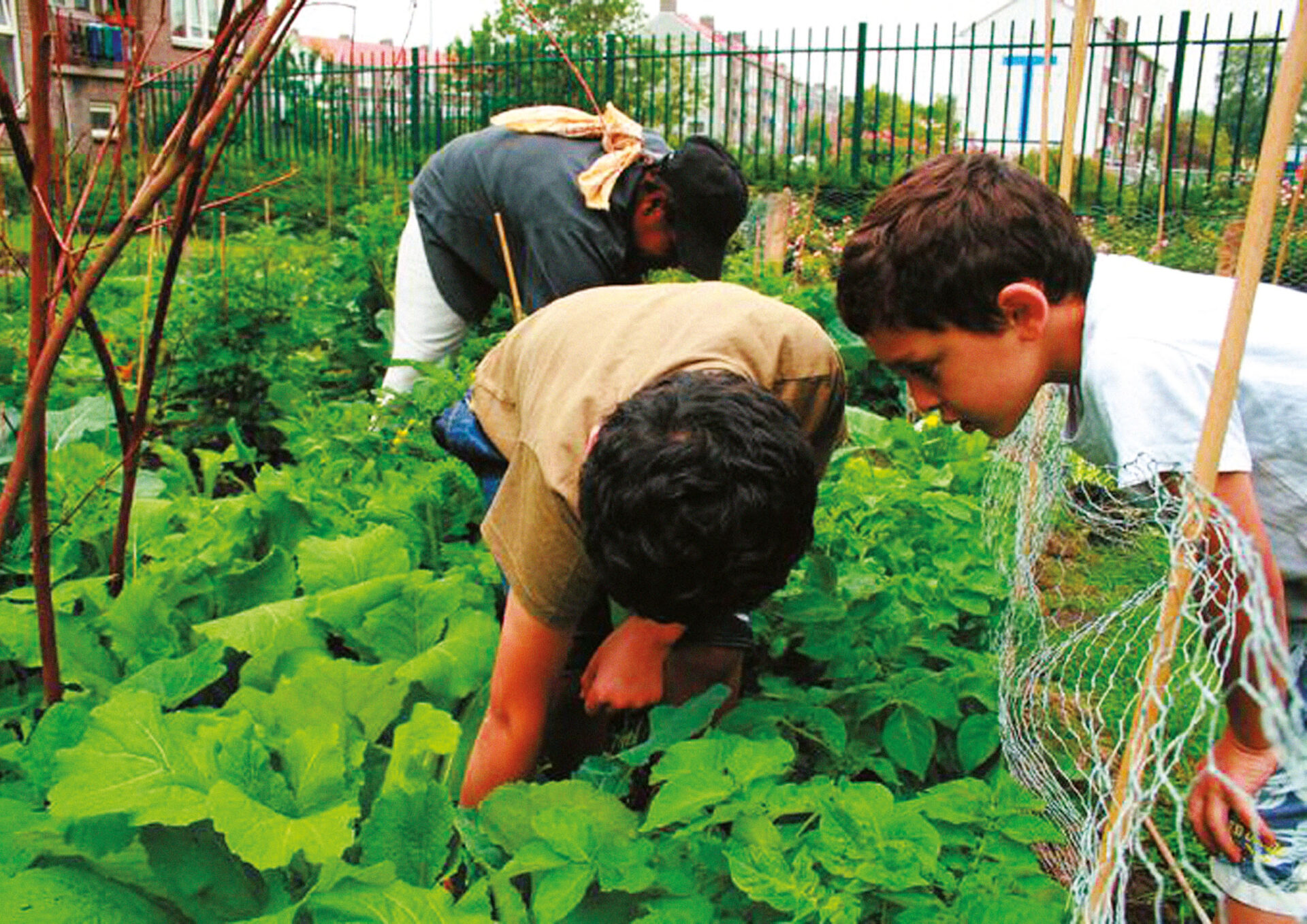
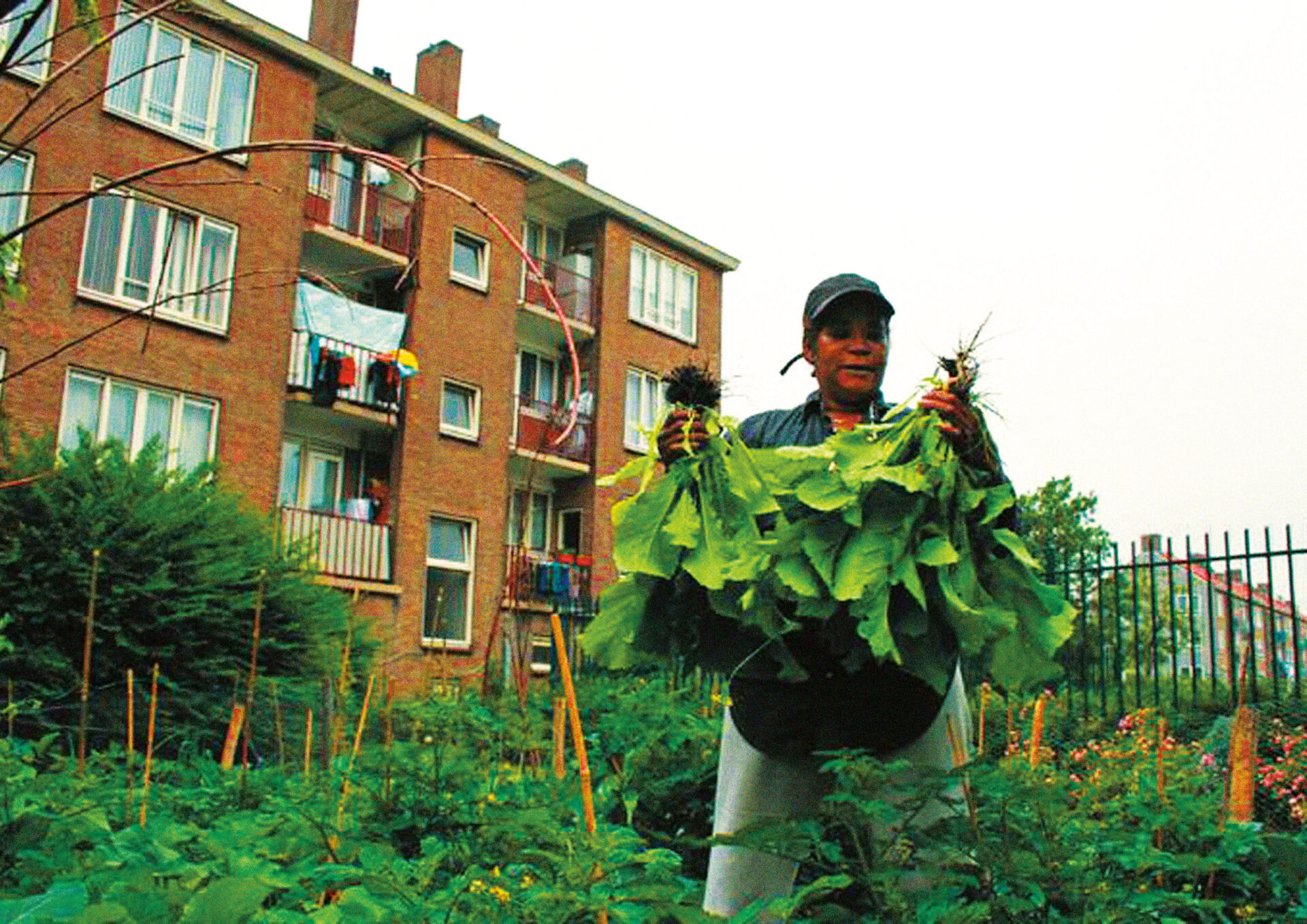
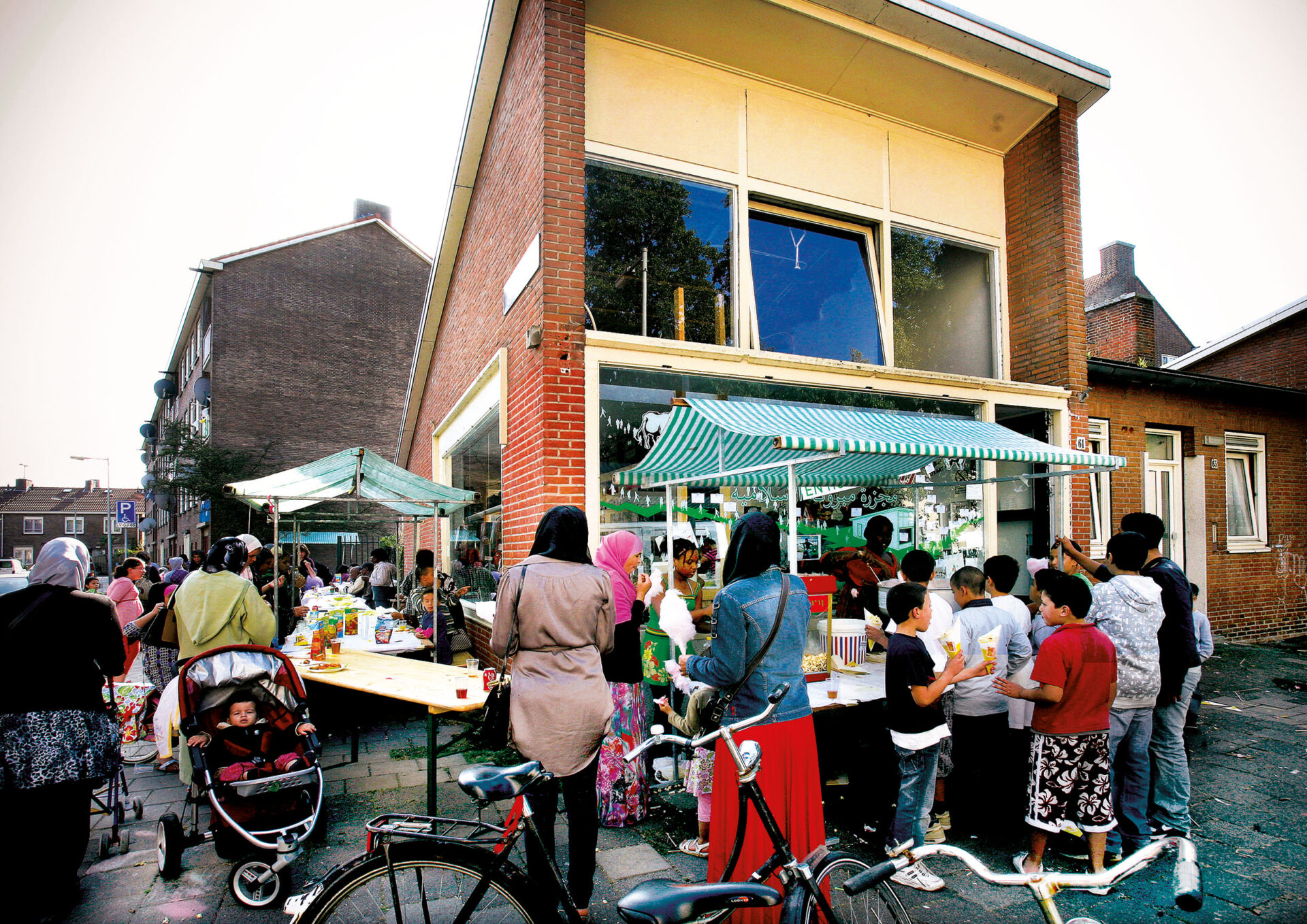
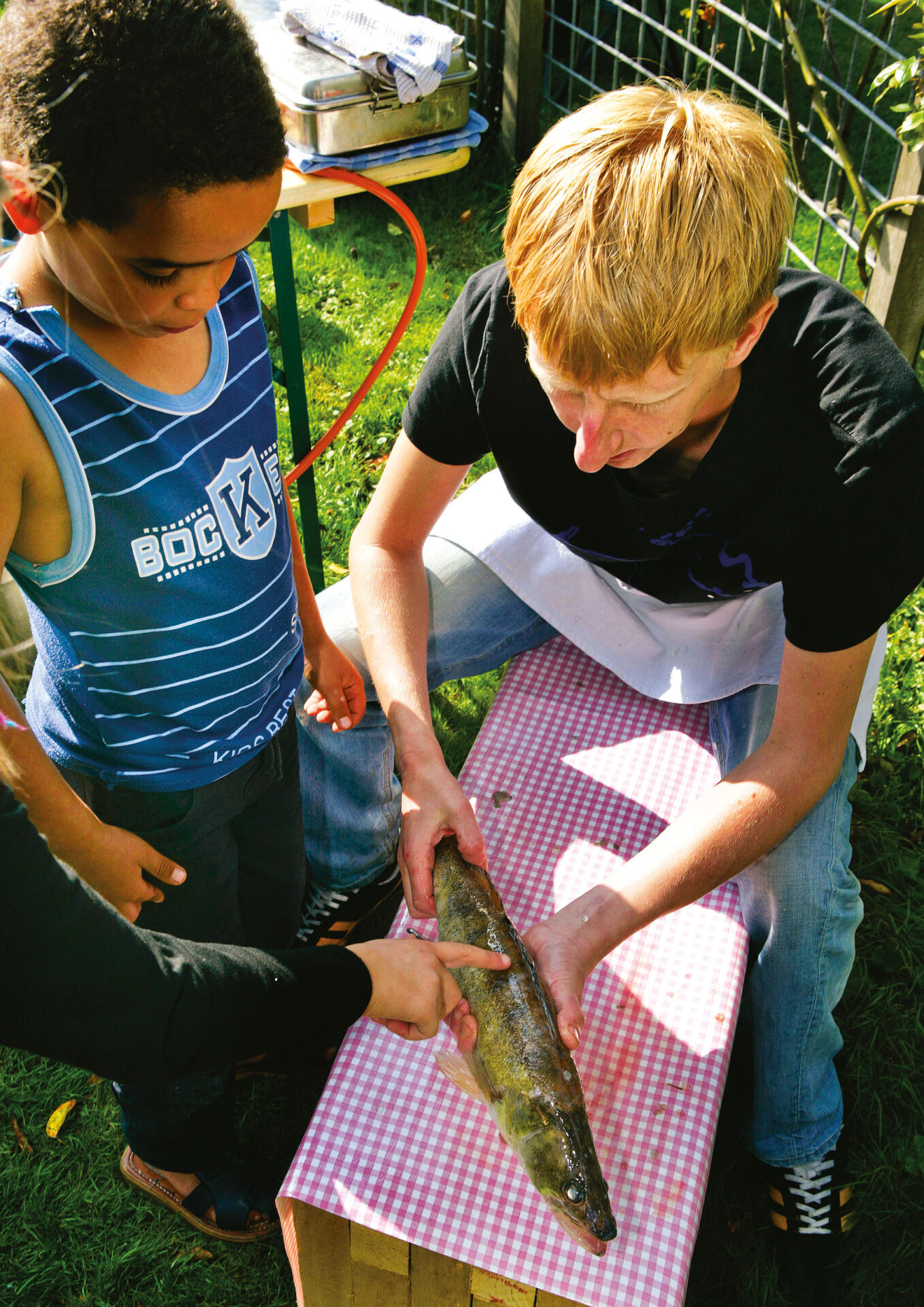

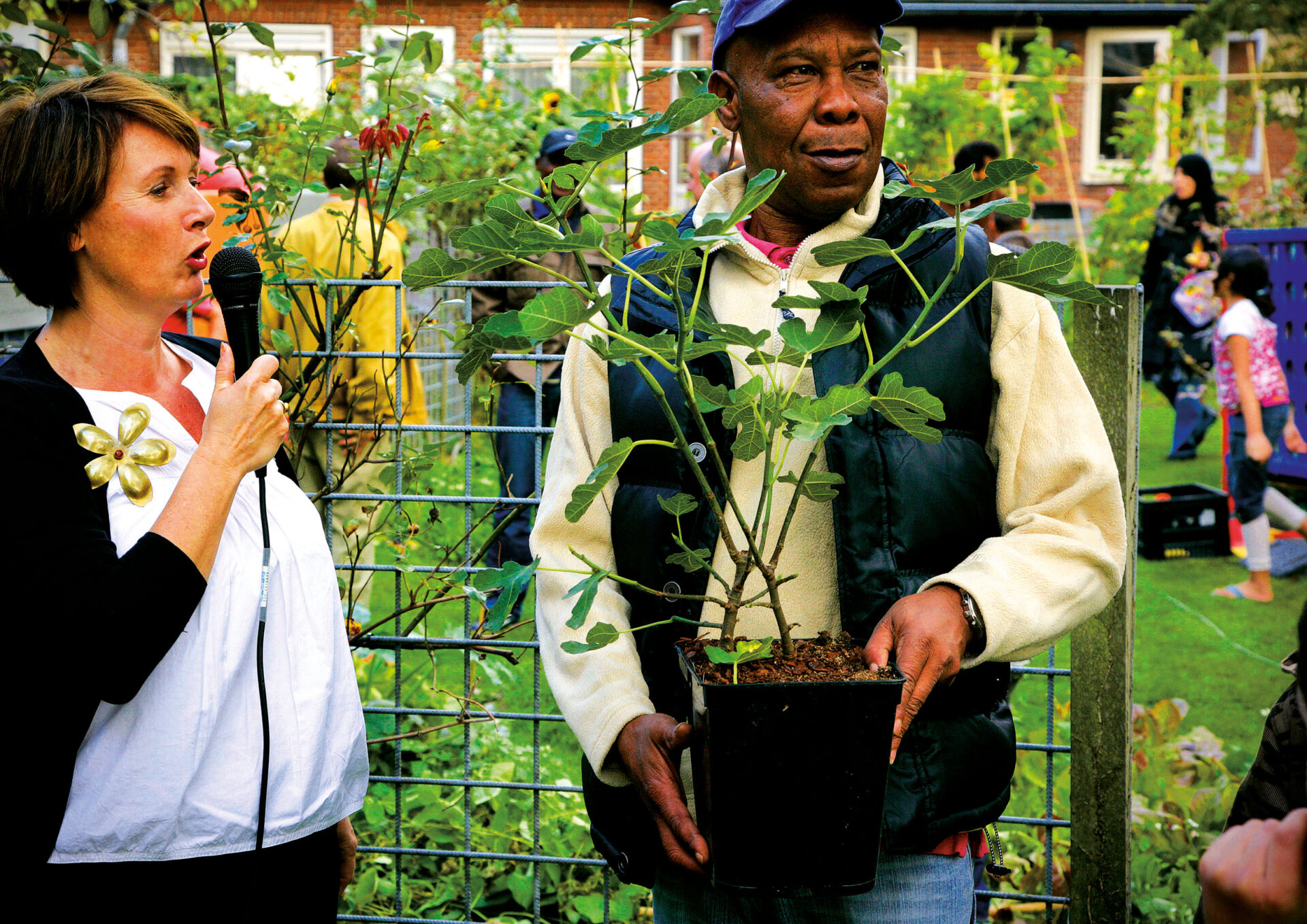


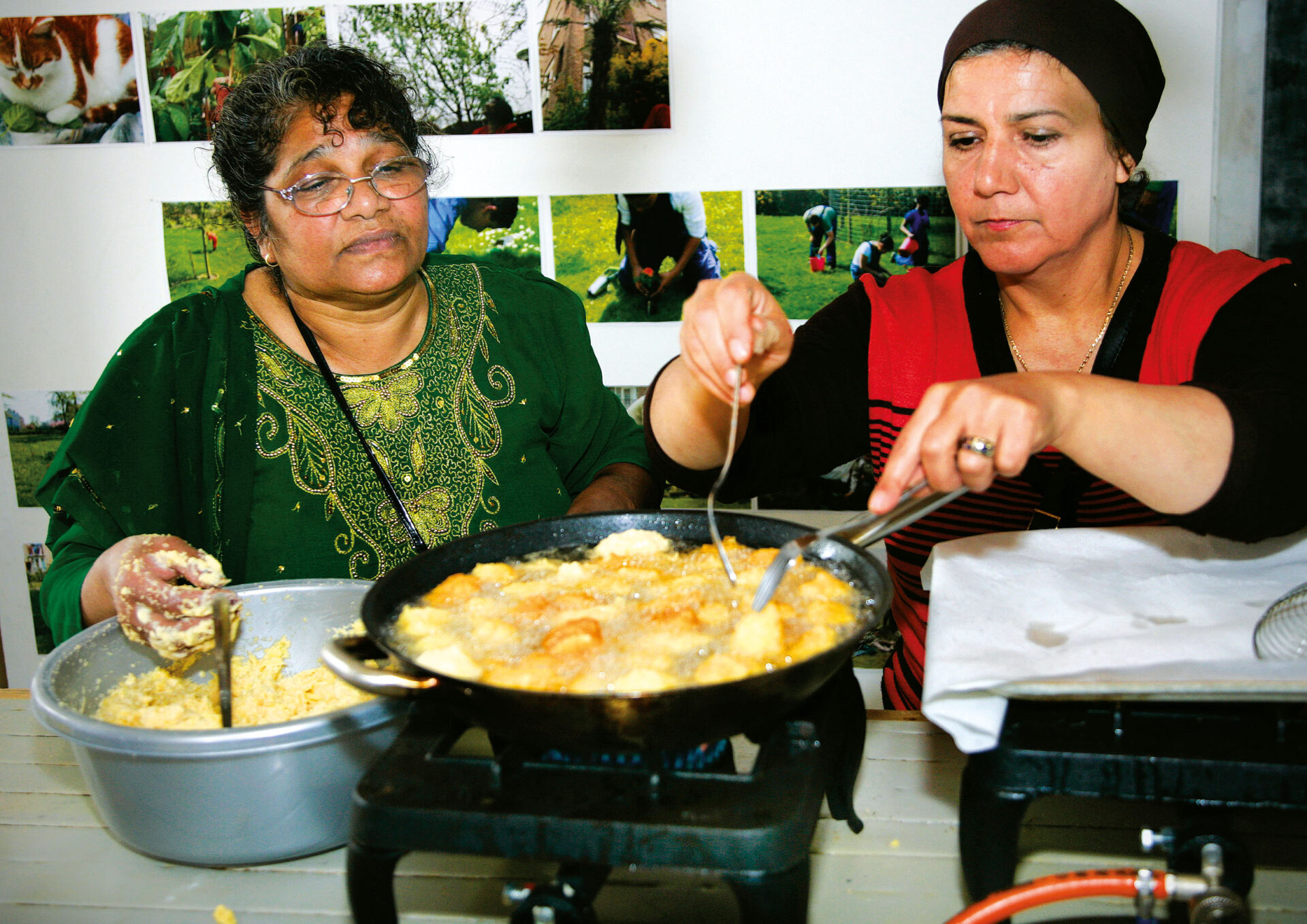


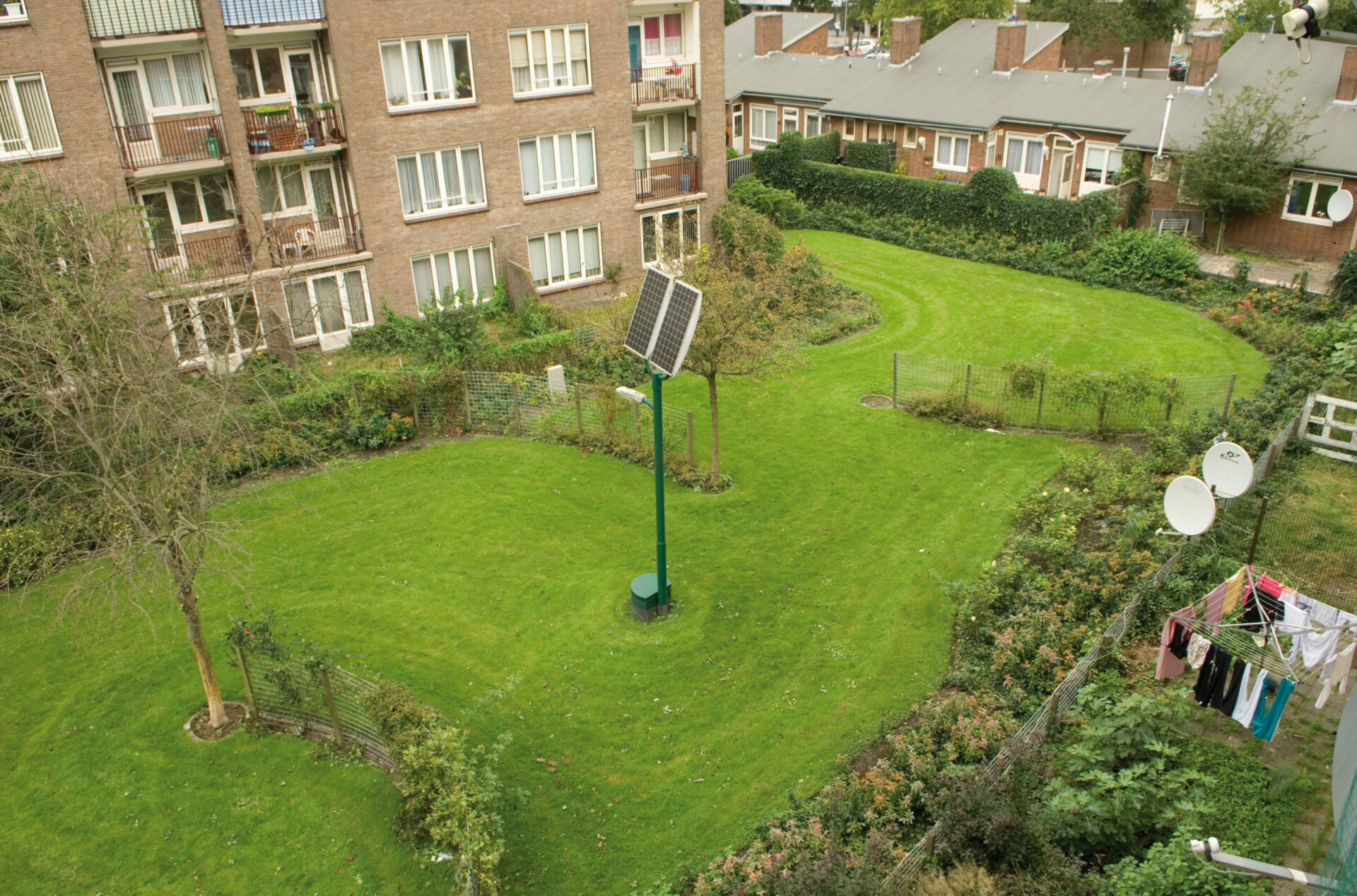
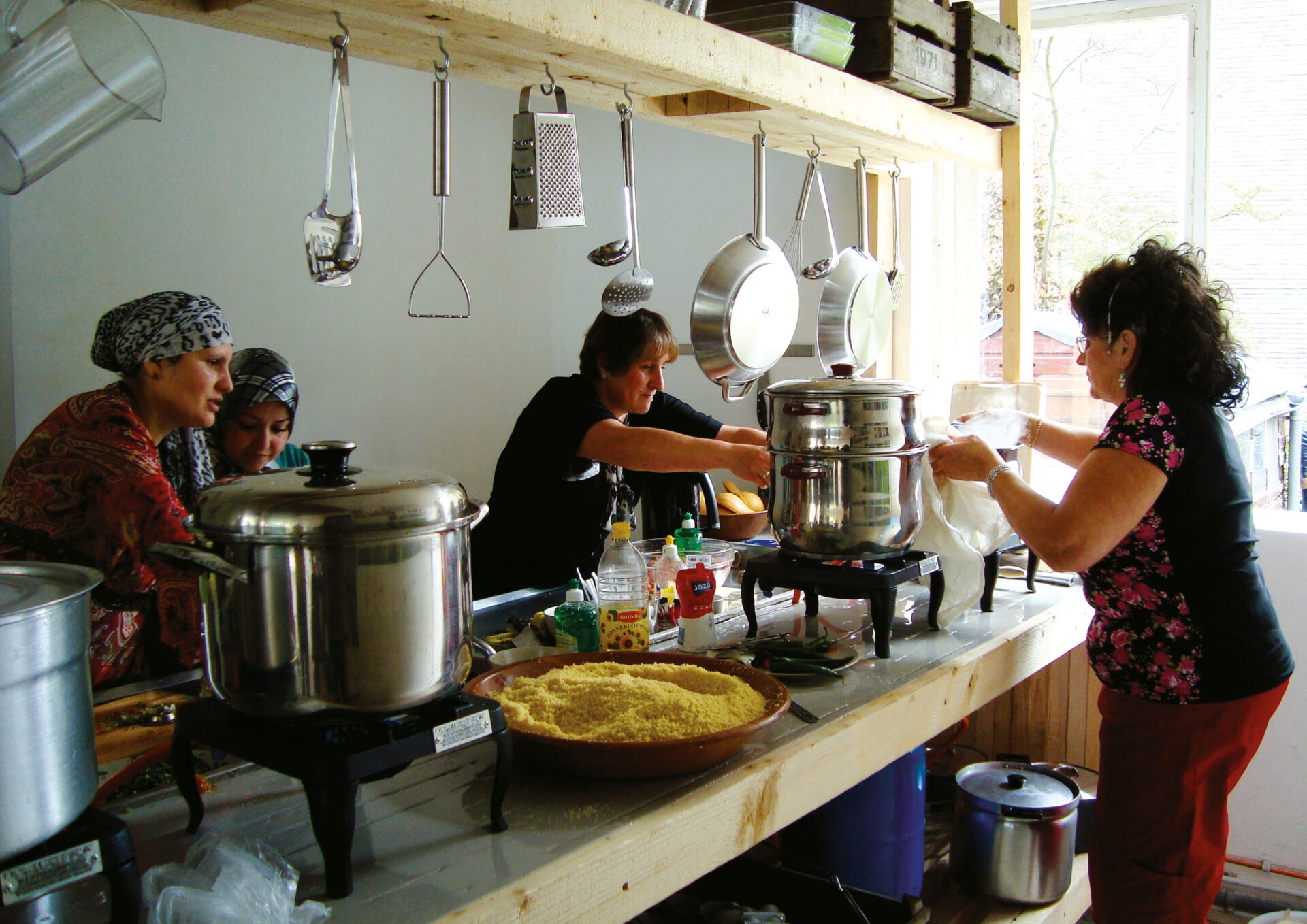
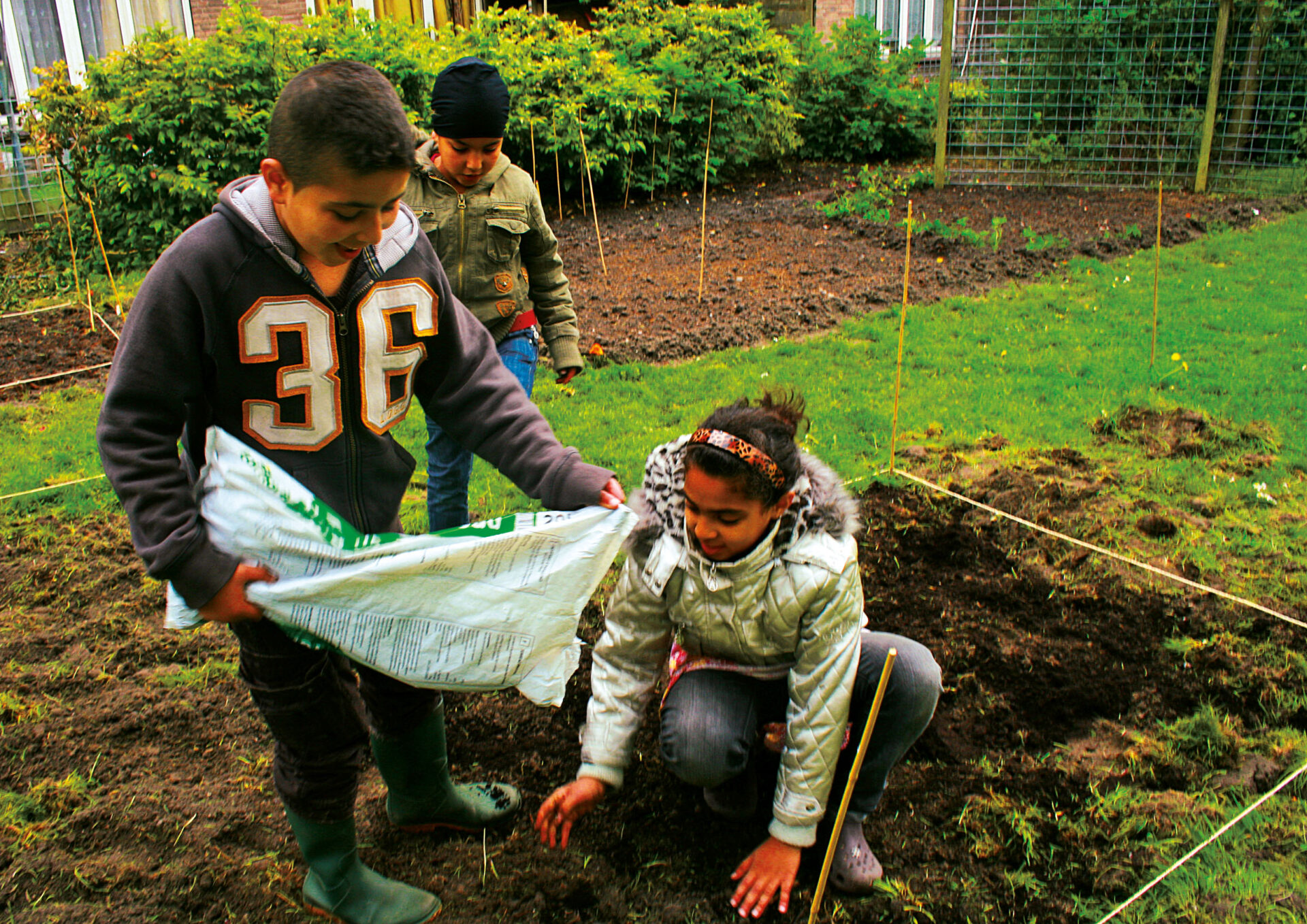
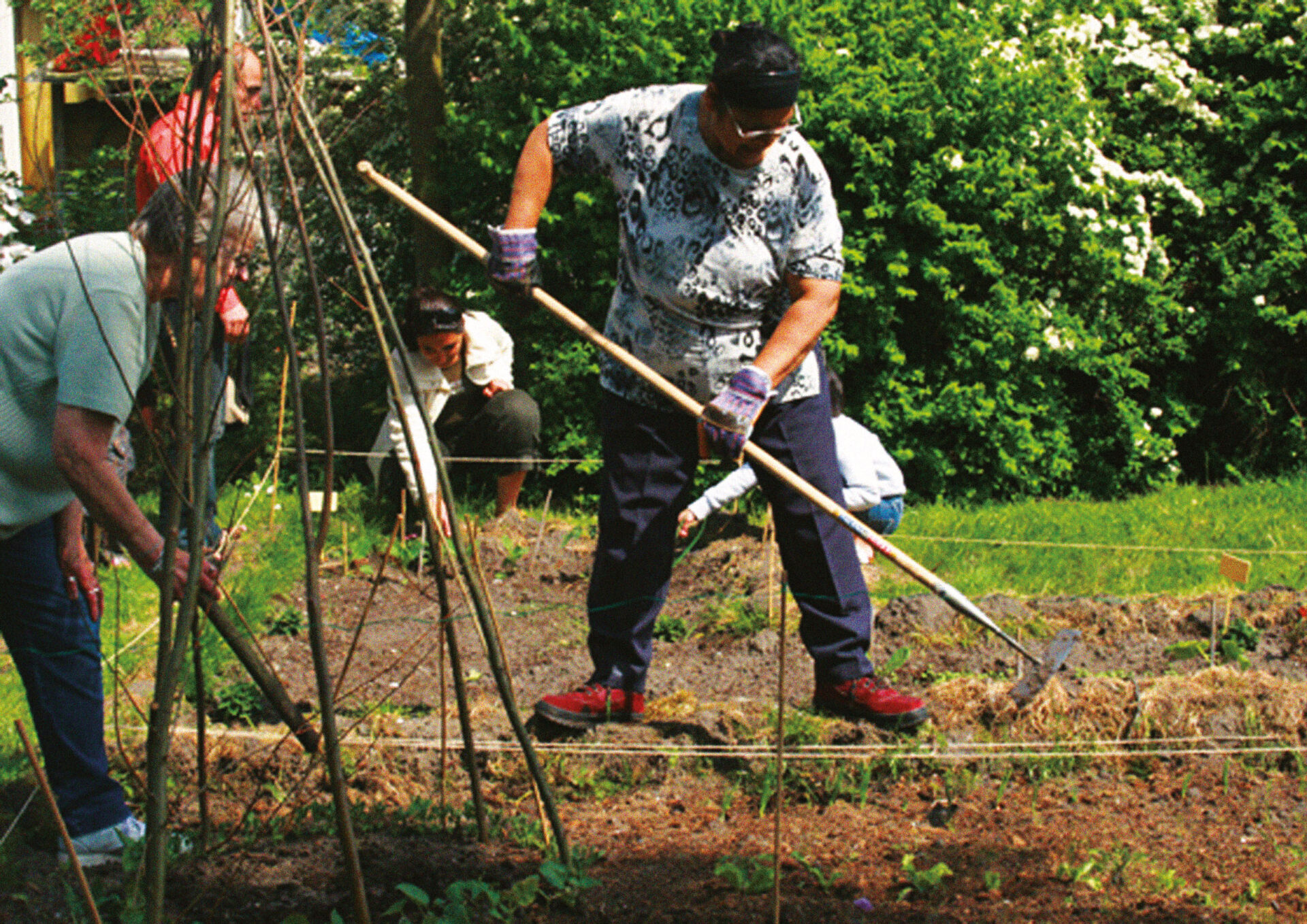
La Fila, La Vega barrio, Caracas, 2003.
Photos : Andre Cypriano
permission de | courtesy of Liyat Esakov & Marjetica Potrč
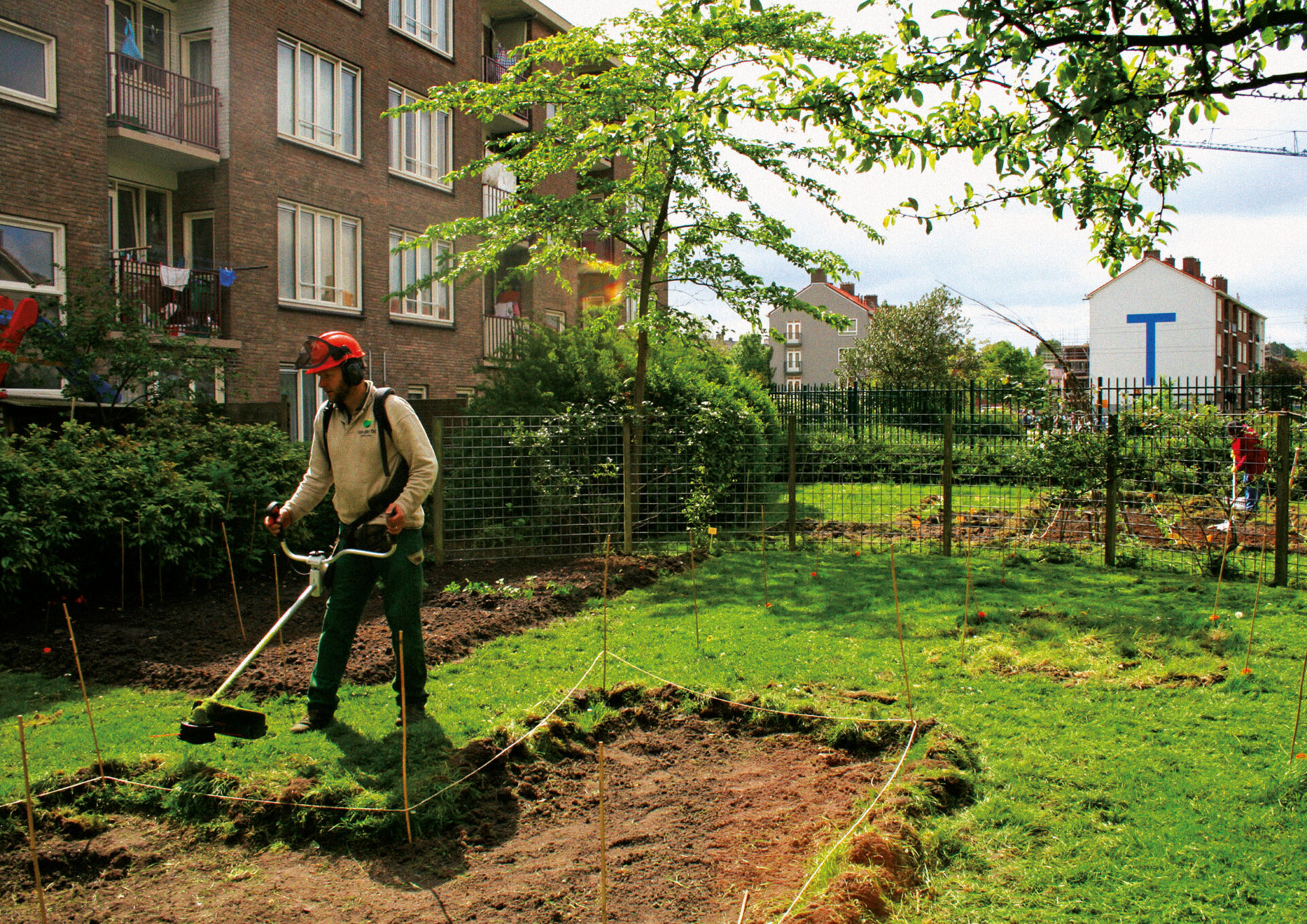
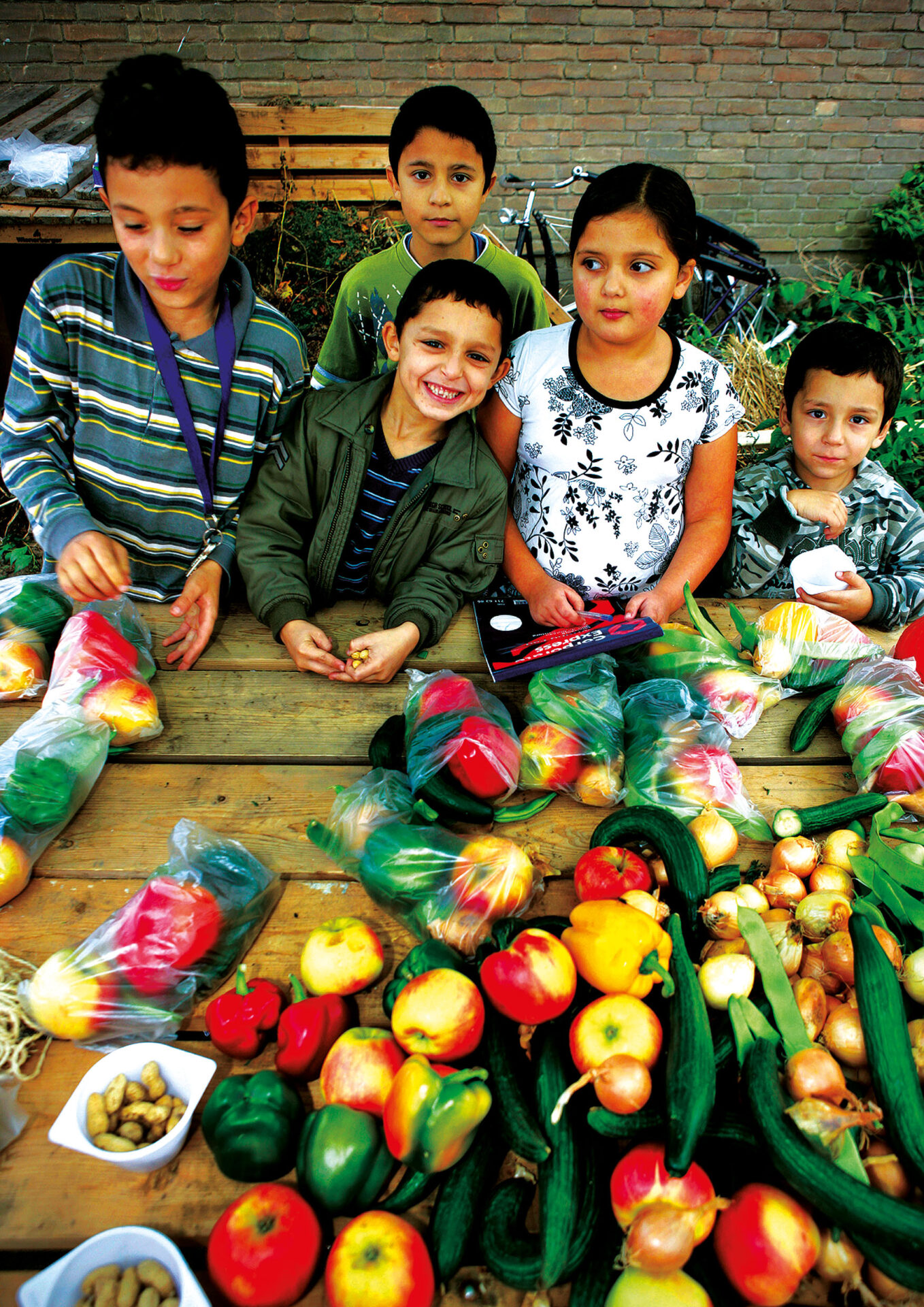
Spatialized Time
Francis Alÿs, Belgian artist living in Mexico City. Alÿs’s performances — executed by him or by other artists — feature unproductive actions whose futility nevertheless enables the performers to connect with their surroundings. Time is spatialized in order to shift the temporal category of the future from its idealized position to the immediate environment. Walking for nine hours through the streets of Mexico City pushing a block of ice until it melts (Paradox of Praxis I, 1997), or orchestrating a group action by five hundred students in a shantytown on the periphery of Lima, Peru, consisting of shovelling a sand dune to move it a few centimetres (When Faith Moves Mountains, 2002): these are futile gestures, but Alÿs documents the time invested in the colossal efforts — time generally refuted by the modern regime of historicity focused on the achievement of projects. The same is true of Rehearsal I (1999 – 2001), a videoed performance featuring a red Volkswagen trying over and over to climb a hill in a Tijuana suburb to reach the American border: once documented, thus ready to pass into history, the time lost is productive in that it exposes the North-South geopolitical boundary, which erects the modernity of the North as the ideal vanishing point (a “fleeing forward,”5 5 - Francis Alÿs, “Russell Ferguson in conversation with Francis Alÿs,” in Francis Alÿs, ed.Cuauhtémoc Medina, Russell Ferguson, Jean Fisher et al., (New York: Phaidon, 2007), 52. explains Alÿs), unattainable from the South, and highlights the immediate link with deteriorated environments (impoverished urban areas, natural environments on the road to desertification). The environment is used no longer as a means, but as an end, as something that can give its inhabitants (here, following the ecological approach of James J. Gibson) possibilities for action.6 6 - James J. Gibson, “The Theory of Affordances,” in Perceiving, Acting, and Knowing, ed.Robert Shaw and John Bransford, (Hillsdale: Erlbaum, 1977), 67 –82. The future — the improvement of living conditions — is thinkable only if the performer becomes connected to the environment, here and now. Immanence rather than transcendence . . .
The Long Term
Pierre Huyghe, French artist living in Paris and New York. Huyghe develops situations that manifest their porosity with the passage of time. His attention to the materiality of things involves the creative dimension of objects, living beings, and actions when a situation makes it possible for humans and non-humans to interact with and affect each other. His practice is related to the emergence of new materialism in contemporary art, in which the duality between mind and matter is dissolved as much as possible to show how materiality is more than inert matter. His works and exhibitions expose the vitality of matter when heterogeneous elements are placed in contact and left to themselves in a precise place. Untilled (2012), for example, installed in Karlsaue Park during Documenta 13 in Kassel, showed the transformation of an outdoor site through diverse intimate exchanges that took place there: between the sculpture of a nude woman and swarm of bees covering its face, between a dog (one of whose paws was painted pink) and its territory, between the chemical components of a compost pile, between the organic components (algae, insects) in water puddles — all evolving according to the vagaries of the weather during the exhibition’s four months. Recently, talking about Untilled, the artist statedthat for him the image has become a question of vitality: “I’m interested in the vitality of the image, in the way an idea, an artifact, leaks into a biological or mineral reality . . . . I’m interested in the things or operations in themselves, in the contingency, in the creation of form that would not be exhausted by a sedimentation of discourses.”7 7 - Sky Goodden, “Pierre Huyghe Explains His Buzzy Documenta 13 Installation and Why His Work Is Not Performance Art,” ARTINFO Canada, August 30, 2012, www.blouinartinfo.com/news/story/822127/pierre-huyghe-explains-his-buzzy-documenta-13-installation-and-why-his-work-is-not-performance-art/page/0/2. This vitality is inseparable from the notion of unproductivity (a notion important to Alÿs) at the heart of the Association des temps libérés that Huyghe created in 1995: it is a temporality that becomes active in the long term and through the absence of control — the time that it takes to allow the contingency of human/non-human relationships to do its work. History is no longer projected or gradual: it is immanent to an environment that must be transformed. This is the artist’s only intervention: to choose the elements of a situation that will make it possible to actualize its porosity.
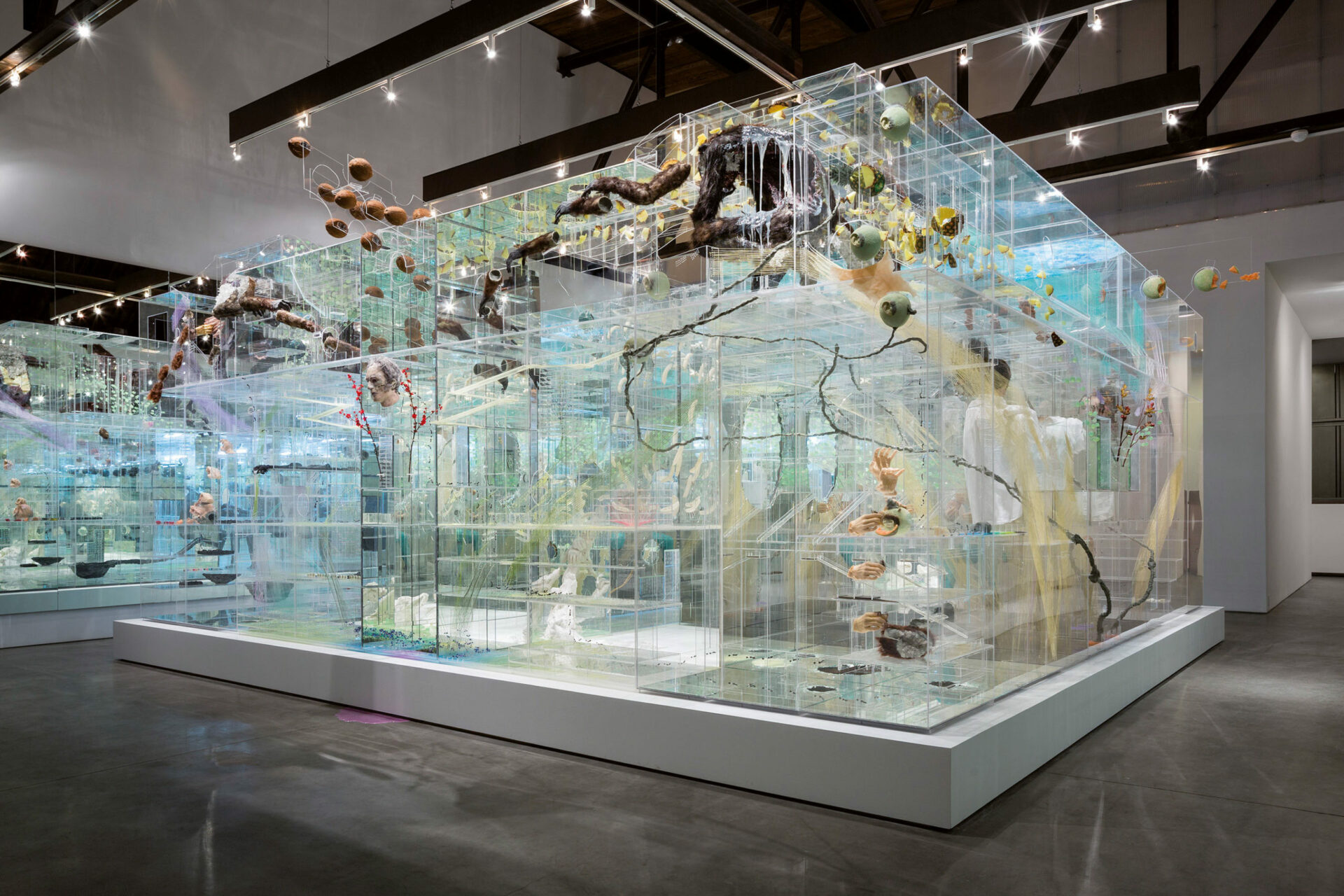
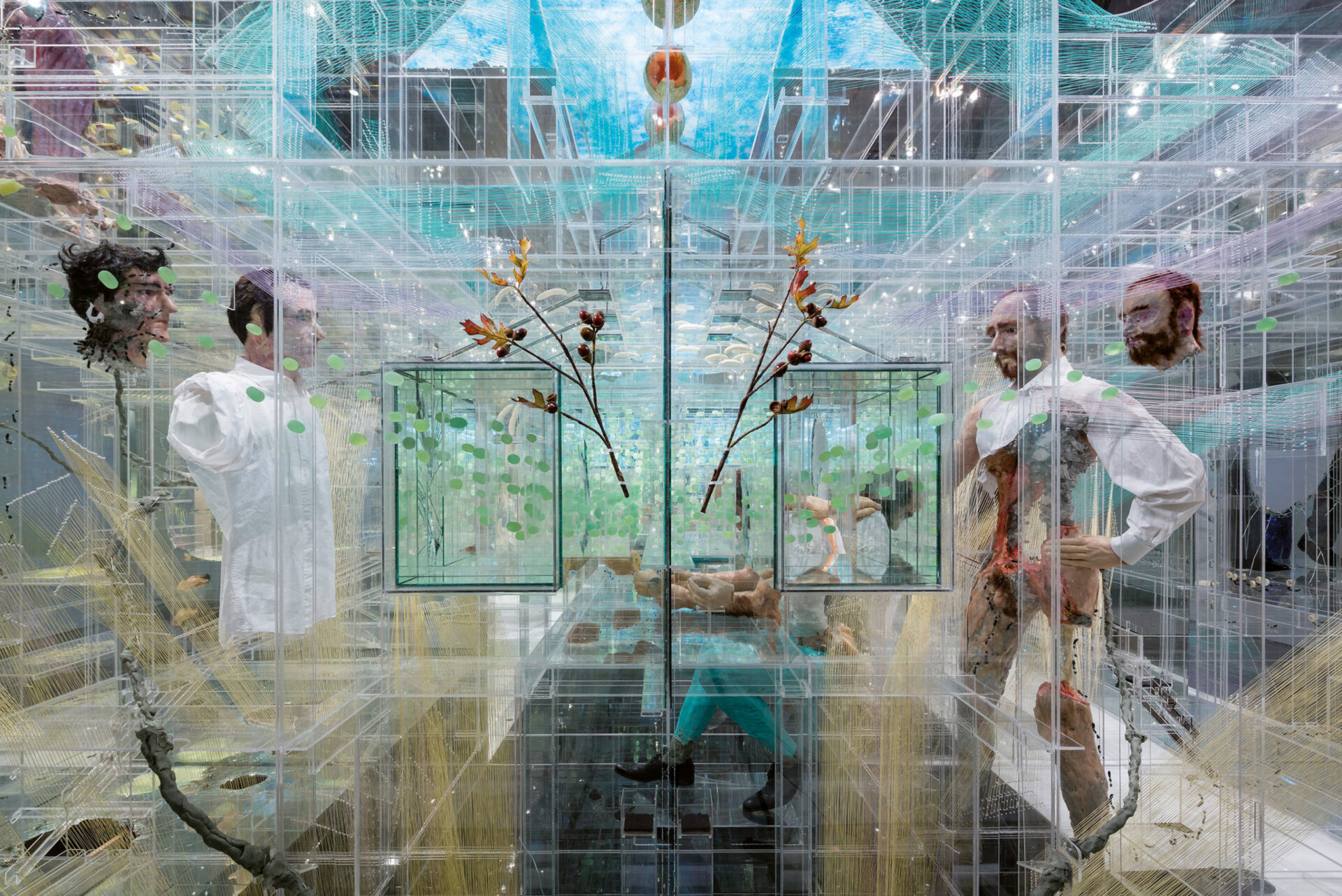
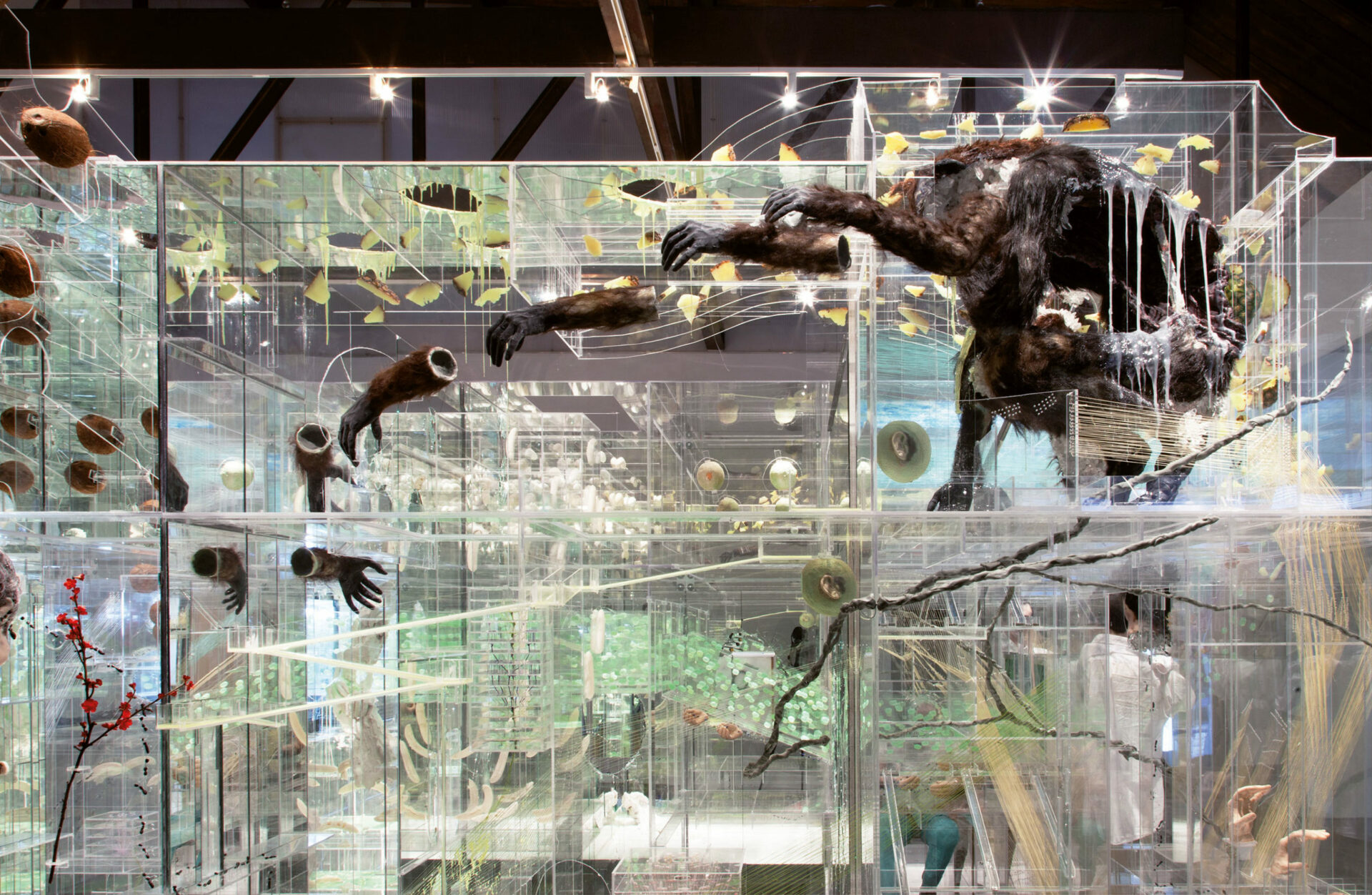
vues d’installation et détails | installation view and details,
Andrea Rosen Gallery, New York, 2014.
Photos : James Ewing et Lance Brewer (image 3), © David Altmejd
permission de | courtesy of Andrea Rosen Gallery, New York
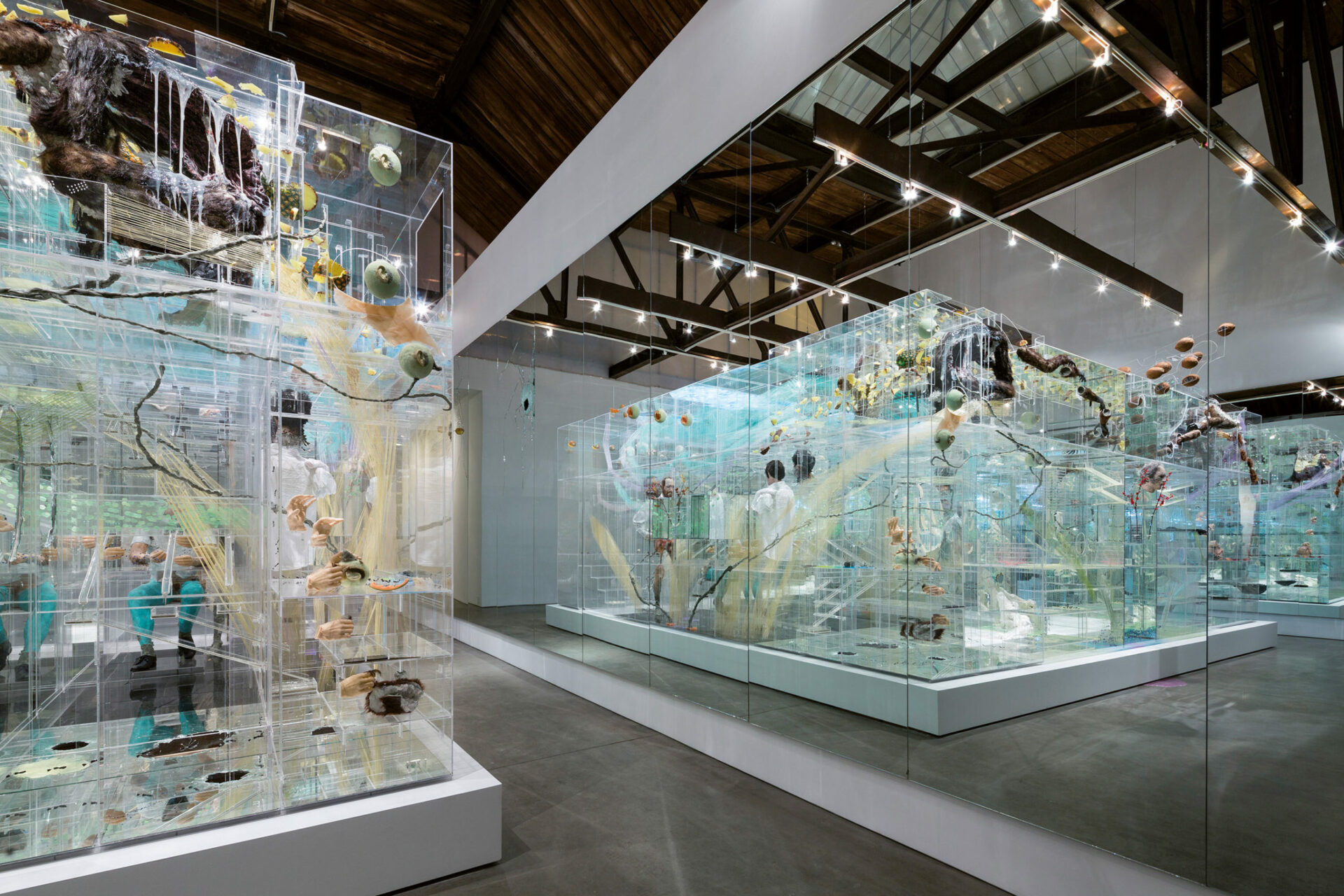
Multidirectional Time
David Altmejd, Quebec sculptor living in New York. His works reinvent the cabinet of curiosities as a system of encyclopedic collection and organization for disparate exotic objects. Through his research, art historian Horst Bredekamp has shown that cabinets of curiosities gradually became known in the seventeenth and eighteenth centuries as a process of classification of objects and disciplines (notably natural history, ethnography, archaeology, and the arts) so that they could be studied, a process sustained by a dynamic vision of history as theatre in constant transformation.8 8 - Horst Bredekamp, The Lure of Antiquity and the Cult of the Machine: The Kunstkammer and the Evolution of Nature, Art, and Technology (Princeton, New Jersey: Markus Wiener Publishers, 1995). Altmejd’s cabinets borrow cubic forms and industrial materials (Plexiglas and mirrors) from minimalist art to modernize the cabinet, but he also exaggerates it by placing within it strange objects that make it surrealistic. For example, the compartments in the very recent The Flux and The Puddle (2014), a Plexiglas cabinet measuring 327.7 x 640.1 x 713.7 cm, contain diverse crystalline and organic objects: quartz, mirrors, polystyrene, foam, epoxy and resin gel, synthetic hair, clothing, metal wires, glass eyes, mannequins, synthetic flowers and branches, feathers, fluorescent lights, and more. Rather than abolishing the modern system of knowledge classification, the cabinet maintains it, both to expose its persistence and to subvert it by privileging the movement of objects from one compartment to another (for instance, a hairy arm emerges from one case, is multiplied in a succession of movements, as if it were one of Muybridge’s chronophotographs, and finally enters another case) and the transformation in materials states (liquefaction, gasification, crystallization). Human shapes are deformed by a becoming-animal. The interior is exteriorized: we can observe sculpted scenes taking place within the structure, but the mirrored divisions create a mise en abime as they direct our gaze to the exterior reflected by these same divisions. The cabinet multiplies the intimate connections among elements through a multidirectional deployment of temporal categories. The cabinet is not teleologically oriented toward the future (was it ever, even in its modern formulation?), for observing its innermost operations means going from past to present or future in no specific order. The origin of a transformation may just as well be its outcome. Temporalities may as easily be parallel as successive. As philosopher Jean-Luc Nancy observes in his explanation of the contemporary transformation of cosmology, today time is no longer “oriented” but flows continually and simultaneously in all directions — backward, forward, and sideways.
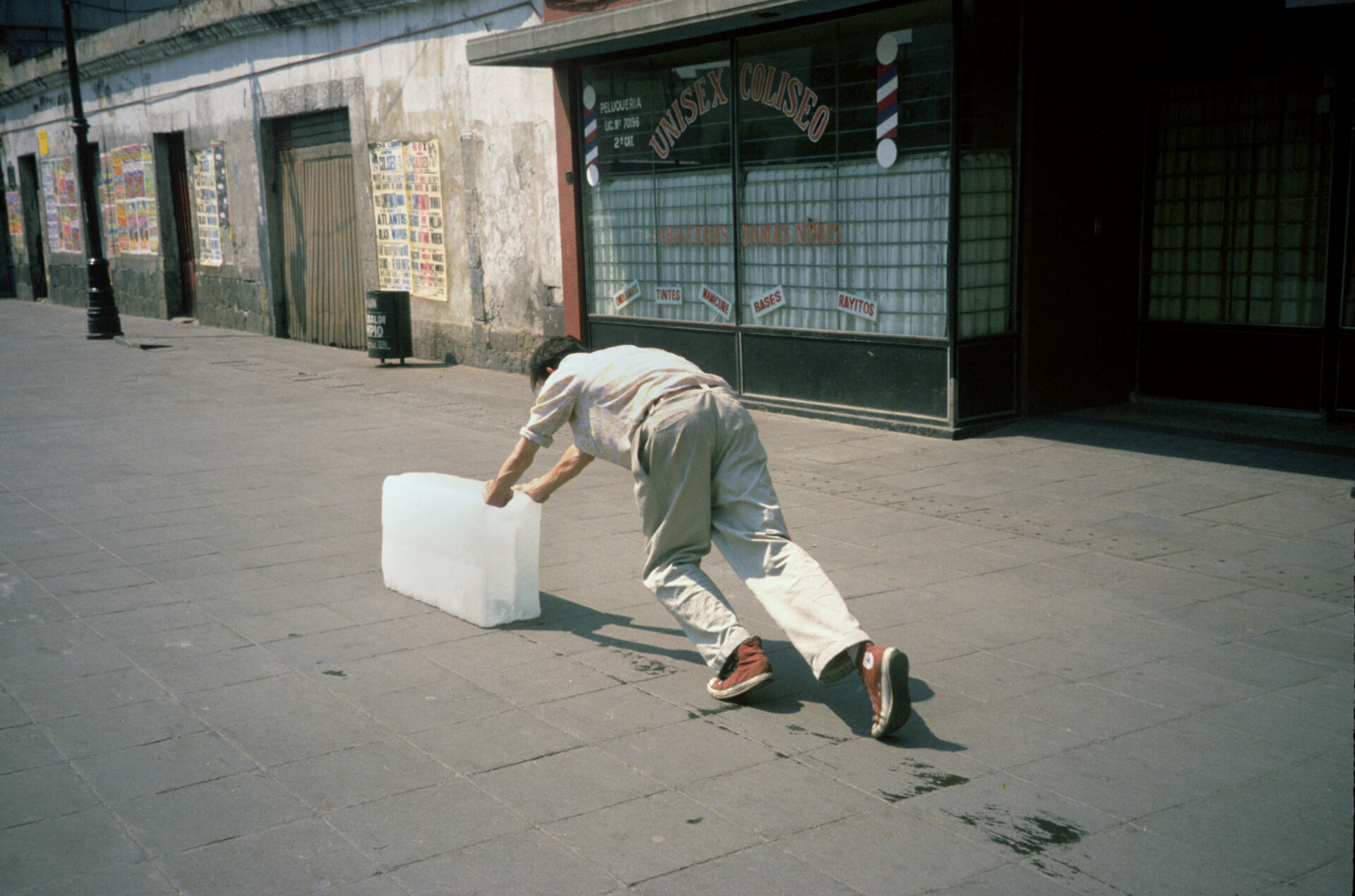
Photo : © Francis Alÿs
permission de | courtesy of David Zwirner, New York/London
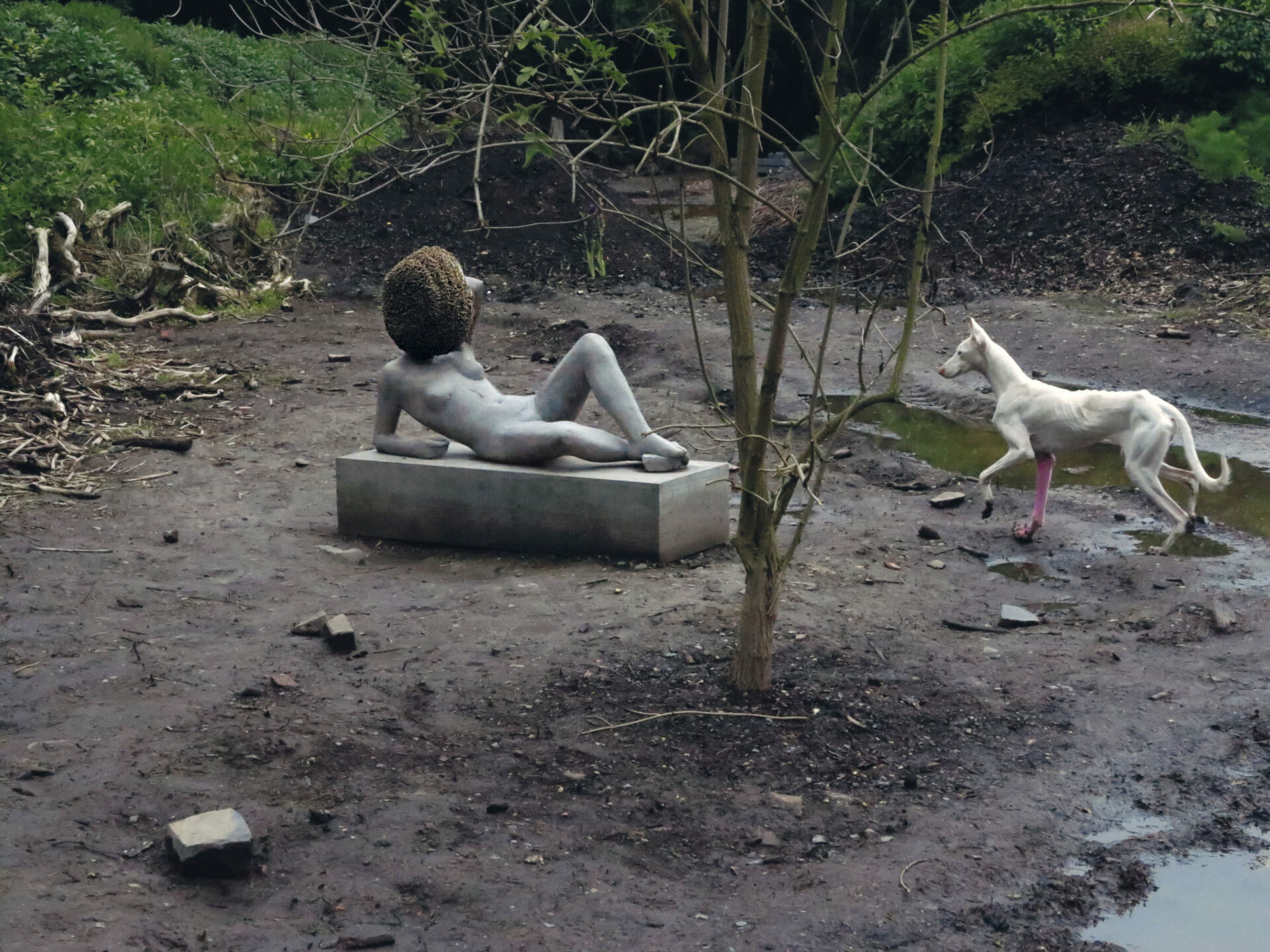
installation, dOCUMENTA (13), Kassel, 2012.
© Pierre Huyghe / SODRAC (2014)
Photo : permission de | courtesy of the artist, Marian Goodman Gallery, New York & Esther Schipper Gallery, Berlin
These four art practices explore a temporalization of history that challenges the modern appreciation of the future as an ideal temporal category of change — a category that is constructed by depreciating the past and the present. Durability, spatialized time, the long term, and multidirectional time are specific temporalities in that they can be instituted only ecologically, in an immanent relationship between the artwork and its environment. They require human beings to become connected to this environment by accepting its transformative possibilities. The residents of a neighbourhood in crisis may participate in these possibilities (Potrč) by sharing their knowledge. The artist may baroquize them (Altmejd). Sometimes, though, the performer or viewer is called upon only to witness these possibilities (Alÿs and Huyghe).
[Translated from the French by Käthe Roth]
